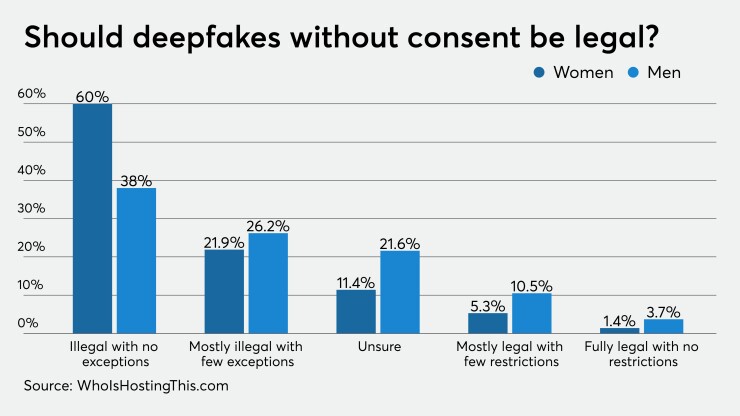Fans of Jordan Peele, part of the duo behind Comedy Central's popular "Key and Peele" series, are likely familiar with his impersonations of former President Barack Obama, including
The video employs a technology known as a deepfake — doctored media employing artificial intelligence to achieve realism. The technology has gained traction across the internet as a comedic gag. In the world of fraud, it is increasingly helping criminals
As the development of AI tools advances, the threat is being extended to banks. One company, Pindrop, has reviewed more than 5 billion calls to financial firms' call centers and says that it has started detecting AI-generated voices in the last year.
Pindrop CEO Vijay Balasubramaniyan said that while the threat to call centers of fraudsters' using deepfakes is real, it has not been very severe so far; scammers by and large prefer to use their own voices rather than that of a computer to try to steal money from companies, according to Balasubramaniyan.
But that could change as AI tools become more sophisticated and accessible. Machine-learning techniques such as
"We anticipate that deepfake attacks will become more sophisticated and abundant in the near future because of the recent increase in good-quality commercial TTS (text to speech) tools," Balasubramaniyan said.
These tools work by taking samples of people talking to create a model of their voice that captures the various characteristics that make them sound how they do. The user can then provide the software with text that gets turned into an audio file of the voice saying whatever the user wants.
Fraudsters deploy voice deepfakes alongside many of the same methods used in other fraud schemes, according to Baptiste Collot, co-founder and CEO of the payment-fraud-prevention platform
"The scam hinges on putting pressure on the target with time-sensitive language to create urgency and offering specific, legitimate company or employee information to gain trust," Collot said. "Often, the fraudster will impersonate a bank representative — someone with authority over the target or someone a bank regularly works with. By appearing as a reputable banking representative, the fraudsters pressure to initiate seemingly real payments."

Pindrop and companies that offer related services, including
In
A potent tool that companies can use to fight back against voice deepfakes is the
Voiceprints are the same technology that allows Apple, Amazon, Google and other devices to differentiate who is speaking. On newer iPhones, the only voice that can activate Siri is the owner's, and certain Alexa devices can differentiate the voices of household members to enable personalized commands (such as "Call mom" or "Play my favorite music").
These voiceprints are also a tool for fraudsters, though, who can take clips of audio from videos of a potential victim, turn that audio into a voiceprint, then train voice generation AI to mimic that voiceprint, mixing in unique cadences and intonations to give a sense of life or reality to the voice.
Despite the eroding trust that companies may have in voice authentication with the advent of deepfakes, biometrics still offer a layer of security from which many banks can benefit, according to Eduardo Azanza, CEO at the identity-verification company
"The convenience of biometrics outweighs the risk — customers no longer want to remember and manage dozens of passwords," Azanza said. "Because biometrics are so unique to an individual, they are less likely to be forgotten, stolen or replicated, ultimately making them the more secure option."
When a bank takes a call in its call center, it is well advised to rely on multiple layers of authentication, Azanza said. Fraudsters can spoof voices, steal passwords and answer security questions, but it's harder to do all of these at once than to do just one.






